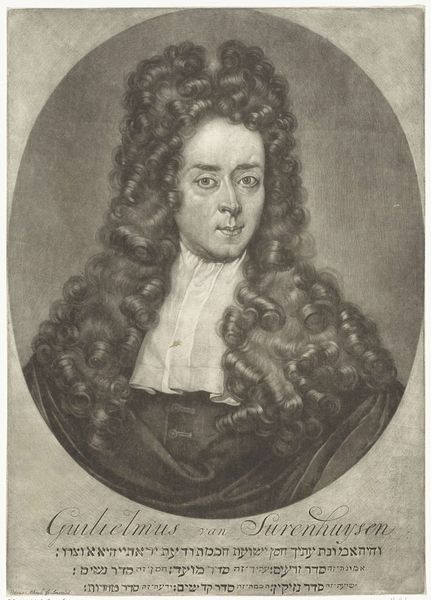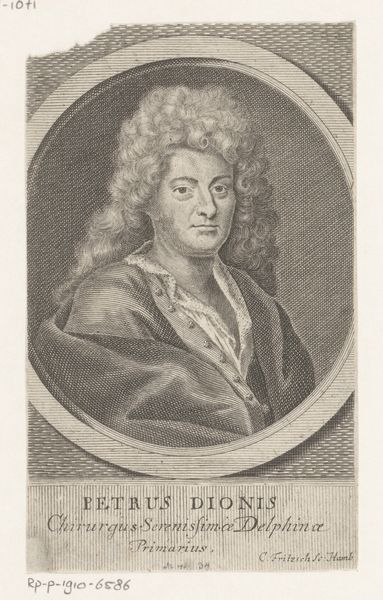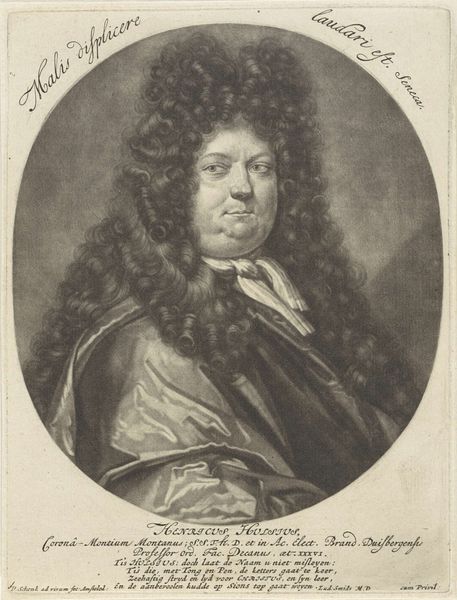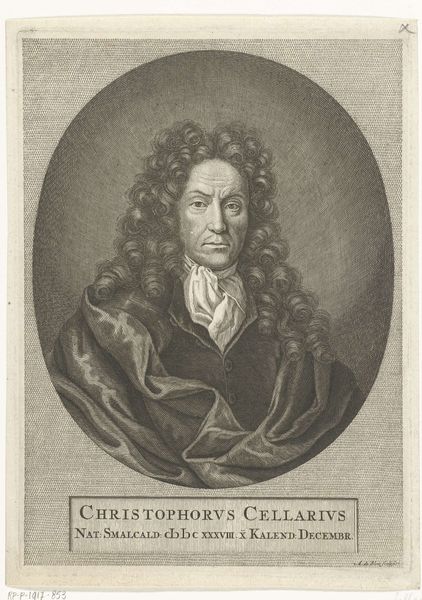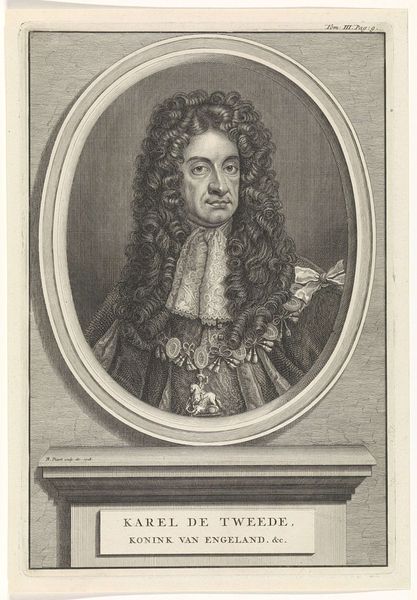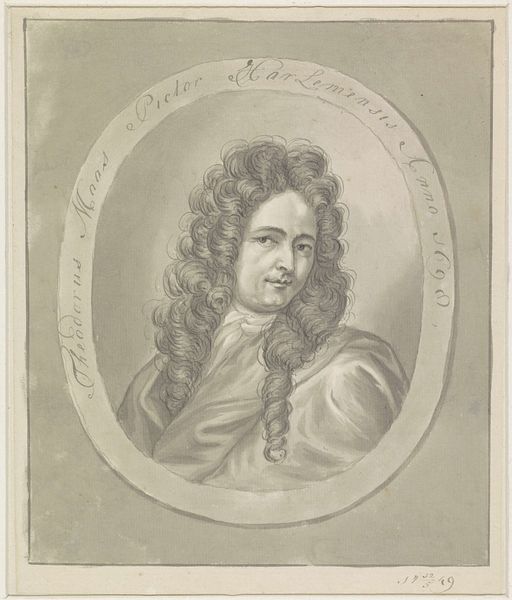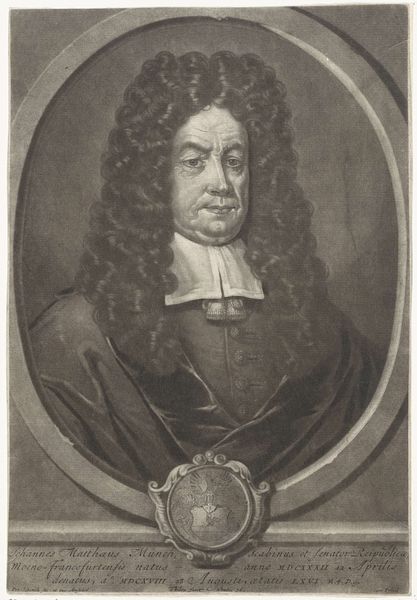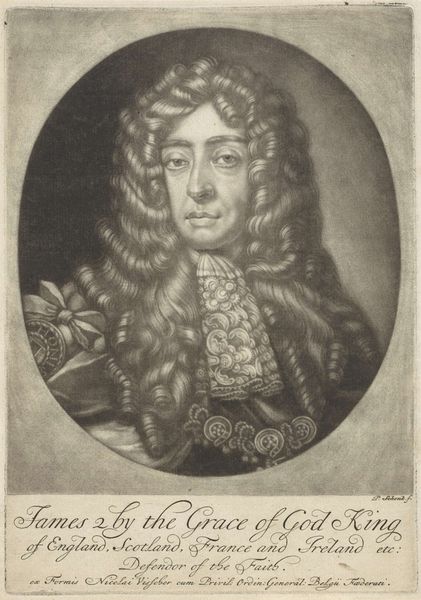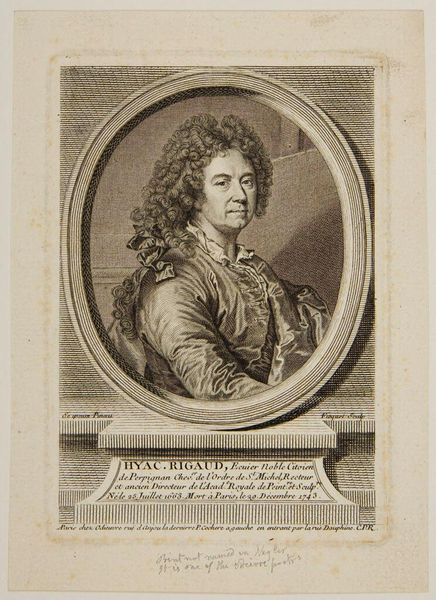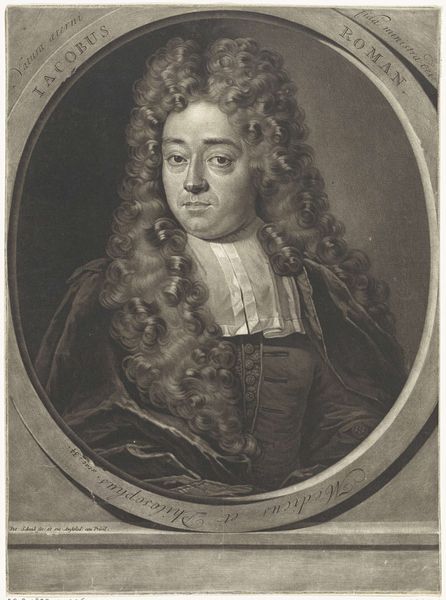
Portret van de jurist en hoogleraar Alexander Arnold Pagenstecher 1695 - 1713
0:00
0:00
print, engraving
#
portrait
#
baroque
# print
#
old engraving style
#
portrait reference
#
history-painting
#
engraving
Dimensions: height 189 mm, width 136 mm
Copyright: Rijks Museum: Open Domain
Curator: This engraving by Pieter Schenk, dating somewhere between 1695 and 1713, depicts Alexander Arnoldus Pagenstecher, a jurist and professor. It's quite a stately piece, wouldn't you agree? Editor: Stately is definitely the word! My first thought was "drama!"—all that swirling hair, the severe gaze. There’s a real sense of power emanating from him, even through the somewhat faded quality of the print. Curator: Well, engravings were the newspapers of their time in many ways—a reproducible image meant widespread visibility and influence. A portrait like this isn't just about likeness, it's about establishing a public image, a legacy. Think of Pagenstecher—professor of law. How he appears matters to the power that his persona projects. Editor: Absolutely. That Baroque aesthetic really emphasizes that grandeur. That massive wig! It's such a deliberate statement. I wonder, though, about the relationship between the man and his image here. Is it an authentic representation, or is he playing a role? Or both, of course... Curator: I’d lean towards the "playing a role" theory. This image exists because Pagenstecher chose to project it. His profession almost demanded this level of composed respectability, power, the perfect display of social currency, literally framing his face. Editor: True. And Schenk, as the engraver, is complicit in crafting that image, even though the printmaking itself isn't particularly... nuanced. You know? Compared to other examples from the era, this print is serviceable in achieving a record of the man and perhaps doesn't have much individual flair in itself. Curator: Yes, but in that sense it served its precise, politically fueled goal, one that likely superseded pure artistry. The image and what the image does, were its core purposes, perfectly calibrated for its societal moment and reception. Editor: Ultimately, it’s an artifact of its time, isn’t it? A little glimpse into the world of 17th-century academia and power dynamics. And I appreciate it a little more knowing that, seeing it now less as just a face and more as a document. Curator: Precisely. History etched in ink, as they say.
Comments
No comments
Be the first to comment and join the conversation on the ultimate creative platform.
